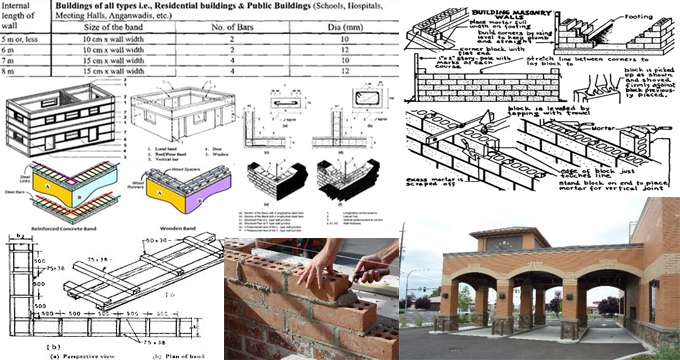
Categories and causes of movements in Masonry Building
Movements in masonry buildings are described as deformations which occur because of different purposes. This construction article provides information on categories and reasons of such movements in masonry buildings.
Various reasons like temperature deviations and alterations in moisture content can create deformations in masonry structures. These movements are very important to check their detrimental influence on the masonry buildings.
Substantial stresses may be formed because of constraint of masonry members by correlation with those masonry elements which contain diverse movement.
Movement restriction of masonry, a breakable material, that causes fracture and forms cracks. The water will infiltrate via these cracks and impair the building fabrics.
The processes undertaken for rectification are usually troublesome and expensive. Therefore, it is very much essential to consider movements of masonry structures at initial design phases.
Given below, the categories and reasons of movement in masonry buildings:
? Moisture variations
? Temperature alternations
? deformation caused by applied loads
? Foundation movements
? Chemical reactions in materials
Movements in Masonry Buildings because of moisture variations: It moisture content is altered, it results in producing dimensional changes in masonry materials and this happens for various types of building materials except for metal. These dimensional variations are stable or unchangeable.
The moisture expansion rate of clay brick minimizes in due course as well as it is completely dependent on the nature of the clay and firing degree.
British Standard offers good assistance on movements causing by moisture variations and established that, standard anticipated movement range in fired clay unit is generally under 0.02%.
Prolonged expansion occurred due to absorption of moisture from atmosphere. The exterior and interior walls equally absorb moisture but it is substantially faster in the former.

To read the complete article, click on the following link theconstructor.org

